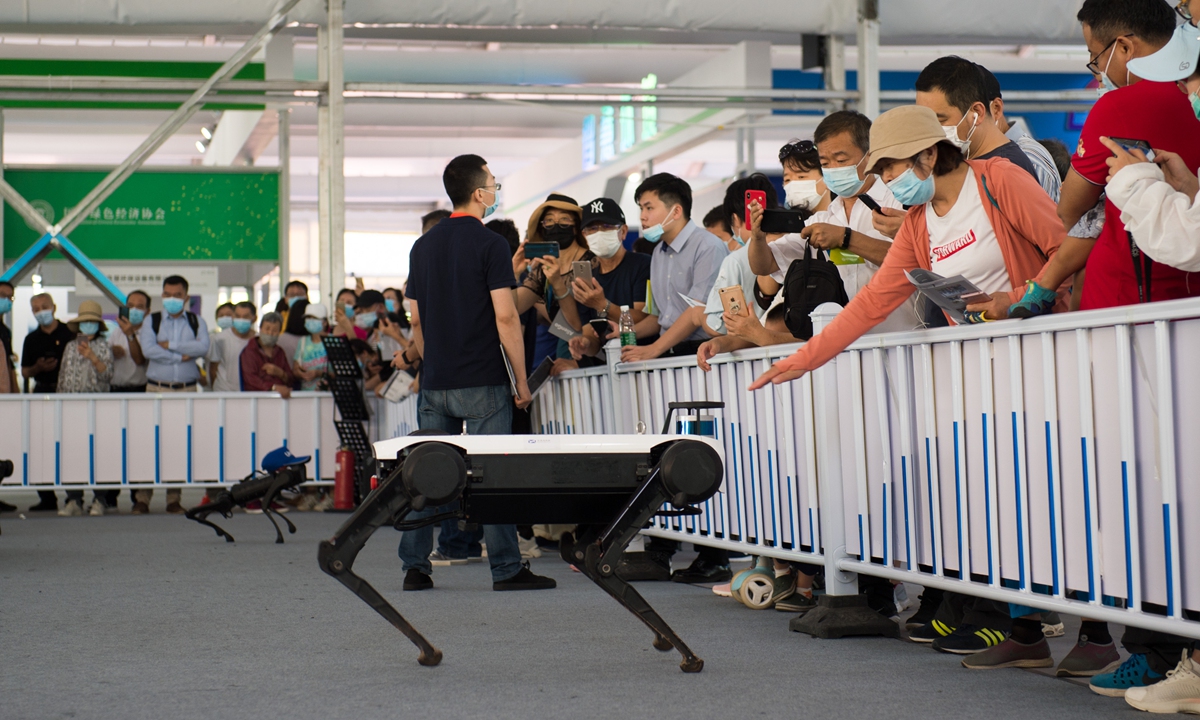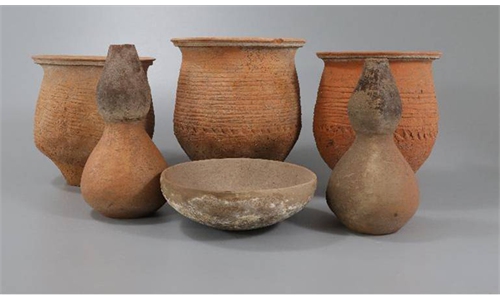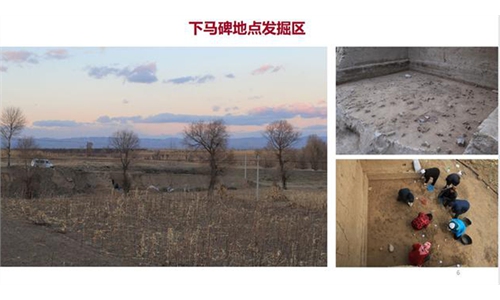ARTS / CULTURE & LEISURE
Robot dogs like Boston Dynamics’ Spot can be used in Chinese archaeological work: experts

Visitors interact with a robot dog at the China International Fair for Trade in Services (CIFTIS) on Tuesday. The 2020 CIFTIS in Beijing is the first major international economic and trade event held both online and in person by China since the COVID-19 outbreak. Photo: cnsphoto
Chinese experts expressed optimism about the prospects surrounding scientific and technological archaeology in China, saying robot dogs like Boston Dynamics' Spot could also be used in Chinese archaeological projects and that costs could be reduced through mass production considering the large scale of archaeology in the country.The analysis came after Ars Technica reported that the robot dog Spot is helping archaeologists patrol the 2,000-year-old Roman ruins of Pompeii in Southern Italy for signs of erosion, damage, and looting.
"It can be seen as the application and assistance of scientific and technological means to protect cultural heritage, especially in inaccessible or dangerous areas and special environments. It has good prospects," Sun Jian, deputy director of the National Center of Underwater Cultural Heritage, told the Global Tomes on Wednesday.
According to the report, the doglike machine is a four-legged walking robot that can cross uneven terrain while carrying small payloads like cameras or sensors. The park officials also plan to test the robot dog's skills at finding and exploring tunnels dug by looters, who still occasionally sneak into the site looking for artifacts to sell on the illicit art and antiquities market.
According to Sun, China has similar technological devices such as the remote operated vehicles, unmanned underwater vehicles and bionic robot fish that are used in underwater archaeology. These devices can travel depths of several kilometers to detect, photograph and collect samples, which is much deeper than the 100-meter range for regular scuba diving.
However, he pointed out that current technology is not the major problem, but rather costs and a device's reliability.
Media reported that the new Spot, with a battery, charger, and tablet controller, sells for $74,500.
Zuo Shiquan, head of the Equipment Manufacturing Research Institute at the China Center for Information Industry Development, told the Global Times on Wednesday that the reason why these robot dogs are so expensive is because instead of being mass-produced, the machines are custom-made for demand, which leads to high production costs.
"China has a busy schedule when it comes to archaeological work and usually covers a large area, if we could mass-produce a batch of robots that can be used in many archaeological fields, the costs can be reduced," he added.
Sun echoed that archaeology and the protection of cultural relics are niche markets and often need customized equipment, which means they have a small range of applications and are not easy to commercialize. Meanwhile, advanced devices require professionals to operation them, which also increases costs.
"With the development of archaeology and the advancement of science and technology, scientific and technological archaeology has broad prospects for application," said Sun.
Tang Fei, dean of the Sichuan Provincial Cultural Relics and Archeology Research Institute, told the Global Times that the team has used a range of technology including 3D scanning, high-definition image acquisition, microscopic observation, electron scanning, infrared spectroscopy, CT scanning to comprehensively record and analyze the formation of Pit No. 5 at the Sanxingdui Ruins site.
Officials with China's National Cultural Heritage Administration also stated that China has achieved an outstanding result in scientific and technological archaeology, and it will become an important development direction in the future.




